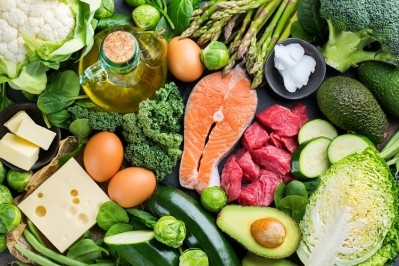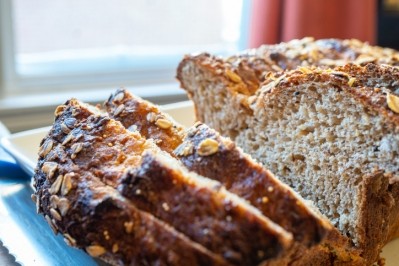Is it time for the ‘outdated’ supermarket free from aisle to evolve?
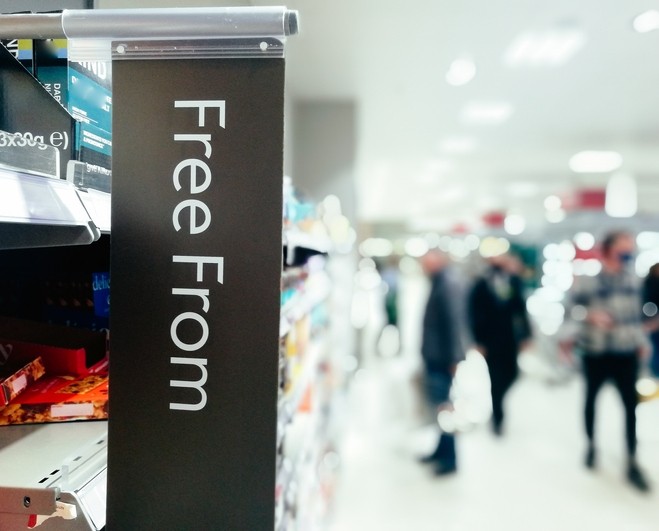
UK health food brand SRSLY Low Carb is calling on supermarkets to evolve the ‘eerily empty and neglected’ free from aisle.
“This is a forgotten aisle with no designated chilled or frozen space which means the incumbent offer is literally restricted to swathes of dry, crunchy cereals, dairy-free chocolate plus a random smattering of reportedly better-for-you energy bars,” complained SRSLY founder Andy Welch. “I still half expect a rogue tumbleweed to come bowling down the aisle.”
It is estimated that only 2-4% of the population are medically gluten or milk intolerant. But Welch, like many others, believes that advancing the category will attract consumers drawn to its perceived health benefits.
Keto and low-carb diets, he told FoodNavigator, can help remedy the rising rates of obesity and unhealthy living in the UK. A study by University College London, for example, warns the number of people with dementia in England and Wales is expected to almost double to 1.7 million by 2040. That’s a 42% increase than earlier forecasts had suggested, and in part because of poor diet.
SRSLY – which makes bread, rolls, wraps, pizza, jam, condiments, and ready meals that are low in carbs and sugar but high in fibre and protein – recently won a deal to supply its products to NHS hospitals nationwide. It has also just raised £246,000 in crowdfunding to launch more products across retail, including naan bread and pasta, and has announced a new distribution deal which will introduce its range into US supermarkets.
“Significantly larger swathes of consumers dip in and out of the category to address milder intolerances,” Welch said. At the same time, he said, organisations like the NHS are turning to low carb and keto diets to reverse ‘the tidal wave’ of type 2 diabetes and obesity.
He asked: “Has the time come for the supermarkets, food halls and delis that have been so pivotal in igniting our nation’s vegan and free from solutions now do the same for better-for-you functional food, by building a credible standalone low carb offer from a number of the pioneering British food and drink providers?”
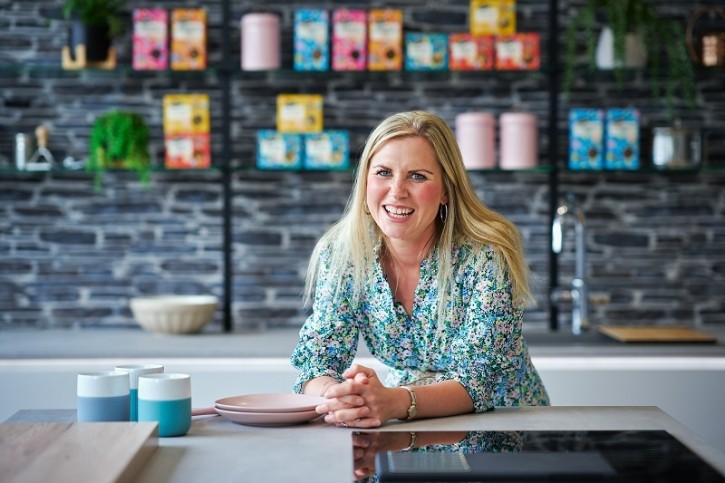
Separate aisles bring negative taste perceptions
This begs the question – will bigger and better separate free from aisles boost the category, or can it blossom whilst mixing it with the standard shelves?
Colette Warren, Head of Product Development at SRSLY, argued that mixed aisles could help improve taste perceptions of free from products among consumers.
“In my view, the state of the nation’s health means every aisle should have a clear, ‘healthier living’ sub-section tied to strict nutritional parameters,” she told FoodNavigator. “Not only would healthier eating be given the platform it richly deserves, but everyday alternatives would also be put under a long overdue spotlight to up their game. There are large swathes of shoppers who never venture down the incumbent ‘ghost aisle’ because free from implies ‘missing’ which many consumers associate with being devoid of taste or too far removed from the norm.”
Customers need ‘clear comparisons to assess their favourites against’, she argued.
Gavin Mclean, founder of the food and drink consultancy Titan Brands, agreed. “The sirens have been blaring for an eternity and yet only now are we waking up to the realisation that over-processed foods are culpable for fuelling the obesity and diabetes epidemics, adversely influencing blood sugar levels in both adults and children, saddling society with long-term health and behavioural issues including debilitating mental health,” he said.
“A wider cross-aisle strategy of clearly defined healthier options (protein, gut health…) would finally provide consumers and society with the better informed ‘real choices’ they crave.”
Mixed aisles could also potentially boost the health credentials of the free from category, added Welch. “Let’s not be hoodwinked into thinking that a lion’s share of the products assembled down this outdated aisle to tackle distinct allergies are any healthier than their everyday peers,” he said. “Look at the current backlash relating to synthetic sweeteners which only underlines how so many so-called better-for-you alternatives are doing little more than papering over the cracks.”
Can the free from aisle confuse those with allergies?
There is also a risk that dedicated free from aisles can actually confuse those with allergies thanks to the fact that ‘free from’ and ‘healthier’ options are not differentiated. That's according to Kirsty Dingwall, founder of Angelic Free From, which has launched the first dedicated kids' top 14-allergen-free biscuit offer’ in Ocado.
“Many of our customers have nut allergies, however over 90% of products in the free from category either contain or ‘May contain’ nuts," she explained. "From our focus groups, we know that many allergy parents spend lots of time reading allergen labels all over the supermarket, and often don’t even visit the free from aisle."
Angelic Free From products are currently retailed in the free from aisle, and Dingwall stressed that for allergy consumers, there should be a dedicated area within supermarkets where safe and trusted choices should be made available. “For healthier products with more of a focus on wellness, I think it would be acceptable to include these within the standard aisle with some shelf labelling to highlight some of the wellness benefits. This could perhaps be a logo or colour scheme which would be used throughout merchandising to highlight healthier choices.
“Allergy consumers currently don’t have a dedicated area where safe products are merchandised, and I think that a differentiated approach would help to improve the consumer joinery for allergy shoppers.”
Separate aisles are hindering growth
Meanwhile, consumer data backs the view that the free from category’s growth potential is being held back by separate aisles. According to Mintel research carried out this year, only 46% of UK gluten- and wheat-free buyers said it's easy to find products suitable for these diets outside the free from section.
"Products sitting outside the free from aisle, stand to miss out on visibility among category buyers, requiring them to actively drive awareness,” Alice Pilkington, Senior Global Food and Drink Analyst told FoodNavigator.
“For example, a presence in the frozen aisle had limited scope to put them on people’s radars, 60% of frozen food buyers saying they spend little time browsing when buying frozen food, and 68% saying that they only go to the frozen aisle when they have specific products in mind to buy. Highlighting the challenges this poses to gluten-/wheat-free products in particular, only 46% of gluten-/wheat-free buyers say it's easy to find products suitable for these diets outside the free from section.
"Online shopping removes some of these barriers, as frozen variants will come up when searching for the relevant types of baked goods generally. However, ensuring in-store awareness will be crucial as only 31% of people do all or most of their grocery shopping online.
"Small freezers located in the free from aisle would be the easiest way in which to raise consumer awareness of bake-at-home products. Signposting offers another way to increase visibility, both in the free from aisle and in the dairy aisle, products such as yogurt or fresh custard often bought to accompany products such as tarts and tortes."
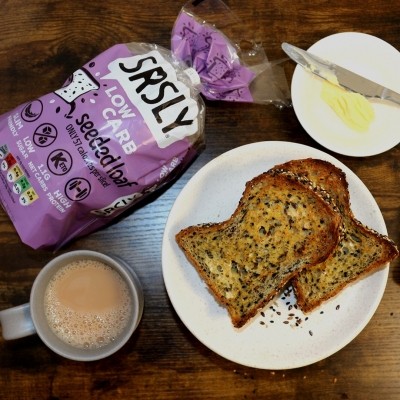
Further analysis from Mintel suggests there is a rosy long-term appetite among consumers for free from products. In 2021 it estimated the total UK free from market (both dairy/lactose free and gluten/wheat free) at £1,152 million.
Half (52%) of Brits report avoidance of some foods or ingredients in their household, peaking at 61% of 16-44s, signalling the ‘undeniably mainstream status of free from dietary habits’.
A quarter (26%) of people say someone in their household avoids dairy, with allergies/intolerances driving avoidance for 12%, neck and neck with healthy lifestyle at 14%.
But Pilkington warned that consumers can dip out of the category during times of economic uncertainty. For example, the UK gluten-/wheat-free market continued on an upward trajectory in 2022 with sales reaching £498 million. “However, this growth was fuelled by high levels of food inflation, with weak underlying performance,” the analyst said.
“As the cost-of-living crisis unfolded, the relatively high cost of gluten-/wheat-free foods in comparison to their standard counterparts will have become more of a barrier, particularly for those who do not need to avoid gluten or wheat for medical reasons.”
‘Clarity of communication is incredibly important’
Whether it is best for free from products to be in their own or in standard aisles is ‘the eternal question’, admitted Jon Walsh, Co-Founder and CEO Bio&Me, which has just launched two new gluten-free porridge pots into 383 Sainsbury's stores, where they will go on separate free from aisles, and independent retailers nationwide.
“Different retailers have tried different ways over the years to try and work it out,” he told us. “I think clarity of communication is incredibly important. So, the onus is on brands to ensure their packaging is clear and concise, while the retailers need to ensure the same for their in-store signage. I believe most retailers are doing a pretty good job on the signage side of things.
One of the biggest frustrations we hear about from consumers is that if you're a free from buyer, you have to visit three different areas in-store: ambient, chilled and frozen. It will be interesting to see if any of the retailers come up with some sort of solution for that in the future."


